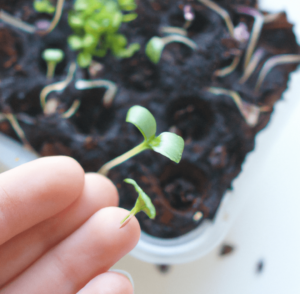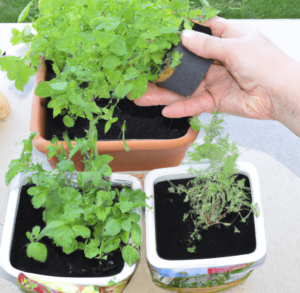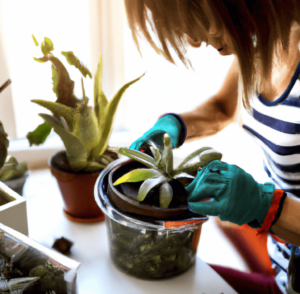Bulb flowers come in a variety of hues, forms, and scents, ranging from tulips and daffodils to hyacinths and crocuses which is why learning how to grow bulb flowers is such a sought-after gardening guide. Well, here’s what our gardening team wants you to know.

Choosing the Right Bulbs
It’s important to select the correct bulbs for your garden when you’re learning how to grow bulb flowers:
- Soil type: Different bulbs thrive in various soil kinds, thus it’s critical to select bulbs that are appropriate for your soil. While certain bulbs, like lilies, prefer lighter soils, others, like daffodils, are more tolerant of heavy soils.
- Variety: There are numerous varieties of bulb flowers available, each with its own blooming style, scent, and appearance. Choose bulbs that will create the appearance you want for your garden after taking into account the type of flower you would like to see there.
- Planting season: Because different bulbs are planted at various periods of the year when you see flowers in your garden will depend on when you planted them which is why learning how to grow annuals and perennials is important. The greatest time to plant some bulbs, like tulips and daffodils, is in the fall, but the optimum time to plant other bulbs, like lilies and alliums, is in the spring.
- Gardening style: When selecting bulbs, take into account your gardening preferences as well as the time and effort you are ready to devote to your garden. While certain bulbs, like crocuses and hyacinths, are simple to take care of and require little upkeep, others, like peonies and irises, call for more work and attention.
Types of Bulb Flowers
You can learn how to grow bulb flowers in general but ultimately, the process will depend on the type you choose. Bulb flowers include some well-known varieties such as tulips, daffodils, hyacinths, crocuses, and snowdrops. You can choose bulbs that will bloom at various times to lengthen the blossoming season in your garden because each of these blooms has a certain blooming time. There is a bulb bloom to suit your needs, whether you like it strong and colorful or delicate and subtle.
Selecting Bulbs Based on Bloom Time and Growing Conditions
If you’re learning how to grow bulb flowers based on their bloom times and specific growing conditions:
- Bloom period: Pick a range of bulbs that blossom at various periods if you want flowers to bloom in your garden from early spring to late spring. For instance, tulips often bloom later in the season than daffodils, which are among the first bulbs to bloom in the spring.
- Growing conditions: Consider the growing conditions needed for each type of bulb before choosing one by taking these factors into account. For instance, while certain bulbs, like tulips, demand full sun, others, like daffodils, can thrive in full sun or moderate shade. When selecting bulbs, take into account how much sunlight and moisture your garden receives.
When to Plant Bulbs
Part of learning how to grow bulb flowers is learning when to plant them. It is ideal to plant your bulbs in the fall before the ground freezes in the winter if you want them to blossom in the spring. Also, it gives them time to develop roots and settle in the soil before the ground freezes.
By doing this, the bulbs will already be in place and prepared to begin growing and flowering when springtime rolls around and the weather begins to warm up. You can plant bulbs as late as early winter if you are in a region with a moderate winter.
Planting Bulbs
It’s time to begin planting your bulbs once you’ve chosen the best ones for your garden. Bulb planting is a quick and straightforward technique that only requires a few simple steps. What you need to know is as follows:
- Timing: It’s crucial to plant bulbs at the right time. You can learn more about the ideal planting period for each species of bulb in Bulbs 101. For instance, to give daffodils time to establish roots and thrive before the winter, they are often planted in the fall, several weeks before the first frost.
- Planting depth: Planting your bulbs at the proper depth is also crucial. You may learn about the suggested planting depth for each kind of bulb at Bulbs 101. Daffodils, for instance, need to be buried 6 to 8 inches deep.
- The distance between bulbs should be taken into account before planting them. You can learn more about the suggested spacing for each kind of bulb in Bulbs 101. Daffodils, for instance, need to be planted around 4-6 inches apart.
- Watering: It’s crucial to give your bulbs plenty of water after planting them to help them adapt to their new environment. Keep the soil moist but not wet during the winter months since too much moisture might cause the bulbs to rot.
You can guarantee that your yard will be bursting with lovely blossoms come spring by following these easy procedures for planting bulbs. For further details and advice on planting bulbs in your garden, check out Bulbs 101.
Preparing the Soil
In order to prepare your soil as you learn how to grow bulb flowers, do the following:
- Start by clearing the area where you will be planting any weeds, pebbles, or other debris before preparing the soil for bedding plants and bulbs.
- Next, loosen the soil to a depth of about 12 inches with a garden fork. Your plants will develop and thrive as a result of the soil being able to breathe and absorb water.
- To increase the soil’s fertility, you could also want to add compost or other organic material. Your plants will benefit from getting the nutrients they require for strong growth and the profusion of flowers.
- You can begin planting your bulbs and bedding plants once the soil has been prepped.
- Follow the instructions for each variety of plant carefully, making sure to plant at the right depth and distance apart, then water your plants thoroughly afterward.
Planting Depth and Spacing
The health of your bulbs and the beauty of your garden depend on proper planting depth and spacing:
- Planting depth: Your bulbs’ health and the success of their growth depend on how deeply you plant them. Generally speaking, bulbs should be planted at a depth that is two to three times their height. Depending on the type of bulb, this depth will change, thus it’s vital to consult gardening websites for precise planting depth information.
- Spacing: Your bulbs’ growth and the overall aesthetic of your garden depend on how far apart they are from one another. To ensure healthy development and avoid overcrowding, allow ample room when planting the bulbs. Bulb spacing should generally be 2-3 times the width of the bulb. Again, the type of bulb will determine the particular spacing instructions, so be sure to visit gardening guides for further details.
Watering and Care Instructions
To succeed after learning how to grow bulb flowers, you’ll need to water and care for your plants:
- Water your bulbs well after planting them. By doing this, you may assist the soil surrounding the bulbs settling and make sure they have adequate moisture to begin developing roots.
- To ensure that your bulbs have enough moisture, water them frequently during the growing season, especially during dry spells. You can cut back on the water you feed your bulbs after they begin to grow and bloom.
- You might need to water them more frequently if you live in a dry region.
- Check your bulbs frequently for signs of damage, and repair them as necessary to keep them safe.
Caring for Bulbs
To take care of and maintain your plants as you’re gardening:
- Winter maintenance: Be sure to thoroughly water your bulbs after planting them in the fall before allowing the ground to freeze over the winter. This keeps the bulbs healthy and shields them from harsh temperatures.
- Spring Maintenance: In the spring, the bulbs will begin to develop and blossom as the temperature rises. Because too much moisture might lead to the bulbs rotting, it’s important to keep the soil moist but not soggy.
- Deadheading: After the blossoms have faded, make sure to remove the dead flowers to stop the plant’s energy from going toward making seeds. This will support healthy growth for the following year’s growth and energy conservation for the plant.
- Think about combinations: Think about combining various bulbs with complementing hues. Daffodils, for instance, can be used with tulips, muscari, and hyacinths to create a lovely and vibrant arrangement.

Deadheading
Regardless of whether your flower plants are in the ground or in containers, deadheading is an essential element of flower plant maintenance.
Deadheading is the process of removing wasted flowers from your plants to promote healthy development and further flowering. For plants that bloom in the spring, such as daffodils, tulips, and hyacinths, deadheading is especially crucial. By removing the wasted blooms, you force the plant to focus its energy on flower generation rather than seed formation:
- Simply clip the wasted blooms off your spring-blooming plants with a pair of garden shears or scissors, being careful to cut the stem just above a set of leaves.
- You can also gently remove the dead blossoms with your fingertips.
Digging and Storing Bulbs
Digging and storing bulbs is a crucial step in gardening if you want to keep your plants looking healthy. Digging out the bulbs after the growth season and storing them correctly will assure their survival until the following planting season:
- Dig the bulbs out slowly and gently, paying attention to any attached roots or foliage.
- Clean the bulbs of any dirt after they have been removed from the ground and allow them to dry for a day or two.
- In order to know what you have for the upcoming season, name the bulbs before storing them in a cold, dark location.
Replanting Bulbs in the Fall
As you learn how to grow bulb flowers, you can replant them in the fall too. This is the time when the bulbs are most active will allow them to develop a solid root system before winter:
- Simply dig a hole slightly deeper than the bulb and insert it into the hole with the sharp side facing up to transplant your bulbs in the fall. In order to protect the roots, carefully cover the bulb with dirt.
- Then, water the area well to let the soil settle. Your bulbs should be planted in a location that receives lots of sunlight since they require it to grow and blossom.
- Additionally, it’s a good idea to plant your bulbs in soil that drains well because too-wet soil might cause bulbs to rot.
Pest and Disease Control
Learning how to grow bulb flowers is effectively protecting them from pests and diseases with the following tips:
- Proper Planting: To avoid rot and other diseases, choose a well-drained place for your bulbs’ planting. Mulch can also be added to the soil to help keep it moist and discourage weed growth.
- Maintenance: Keep weeds and debris-free areas around your bulbs because they can serve as a breeding ground for pests and diseases. To maintain loose, well-aerated soil, you can also use a garden hoe or cultivator.
- Signs of an infestation: Look for holes in the leaves or blossoms, discoloration, or stunted development as symptoms of pests and diseases while inspecting your bulbs on a regular basis. Be sure to act quickly to stop the spread of any diseases or pests if you spot any symptoms.
- Treatment: Depending on the severity of the issue, you may choose to utilize organic or chemical remedies if you come across pests or diseases. Be careful not to damage beneficial insects like bees and butterflies by always following the manufacturer’s recommendations to protect the native plants you learned to grow.
Specific Care for Different Types of Bulb Flowers
Different types of bulb flowers have different requirements for maintenance:
- Daffodils: These are traditional spring-blooming bulbs that require little maintenance and come back year after year. They should be planted in the fall for the greatest results because they require well-drained soil and full light as opposed to partial shade. Daffodils don’t need to be fertilized frequently, but you can give them a slow-release fertilizer when you plant them to give them the nutrition they need to grow and blossom.
- Tulips: Available in a range of hues and shapes, tulips are another common spring-blooming bulb. For optimal results, tulips should be planted in the fall in full sun with well-drained soil. Regular fertilizer is beneficial for tulips, particularly in the spring when they are actively growing.
- Lilies: Lilies are lovely and fragrant summer-blooming bulbs that may thrive in a variety of environments. Lilies should be planted in the spring and prefer well-drained soil, full sun, or partial shade. Regular fertilizer is beneficial for lilies, particularly in the spring when they are actively growing.
Bottom Line: How to Grow Bulb Flowers
Learning how to grow bulb flowers can be broken down into the following:
- Select an area with lots of sun exposure and well-drained soil.
- Choose bulbs that are suitable for your growing environment.
- Before planting, clear the area of weeds and incorporate organic stuff.
- Plant bulbs at the right depth and distance apart.
- Continue to fertilize and keep the soil moist.
- Enjoy the springtime bloom!
FAQs on How to Grow Bulb Flowers
Why are bulb flowers significant in gardening and what are they?
Bulb flowers are a particular kind of plant that develops from bulbs, and they have long been a mainstay in gardening. They are quick, low-maintenance, and available in a range of hues, forms, and fragrances. With the right care, they may bloom year after year and add color and energy to any outdoor space.
What aspects need to be taken into account when selecting the proper bulbs?
When choosing bulbs, take into account the type of soil, the desired flower, the planting season, and your gardening preferences. Some bulbs bloom at different times of the year, and some flourish in particular types of soil. Furthermore, some bulbs need more upkeep and care than others.
How many different varieties of bulb flowers are there?
A variety of bulb flowers, such as tulips, daffodils, hyacinths, crocuses, snowdrops, lilies, alliums, peonies, and irises, are readily accessible.
How can I choose bulbs based on the period of bloom and the growing environment?
The bloom period and growing circumstances of the bulb should be taken into account when choosing bulbs. To extend the blooming season in your garden, use a variety of bulbs that bloom at various times. The quantity of sunlight and moisture the garden receives should also be taken into account. Finally, choose bulbs appropriate for the soil type.
What time of year is ideal for planting bulbs?
Before the ground freezes in the winter, the best time to plant bulbs is in the fall. In the spring, the bulbs will be ready to grow and blossom since they will have had enough time to establish roots and settle in the soil before the winter. If you reside in a place with a moderate winter, you can plant bulbs as late as early winter.
How to grow bulb flowers?
Choose a sunny spot with well-drained soil to plant bulb flowers. Fill the hole with soil after digging it deep enough for the bulb. Before filling the bulb with soil, make sure the top of the bulb is level with the earth’s surface. Your spring bulb flowers will start to blossom once you give the area a good watering.
When should daffodil bulb planting occur?
To give daffodil bulbs time to develop roots and flourish before winter, they should be planted in the fall, a few weeks before the first frost.
What is the appropriate daffodil planting depth?
Six to eight inches of soil should be inserted when planting daffodils.
What is the ideal distance between daffodil bulbs?
Planting distances for daffodils should be between 4-6 inches.
What di do I need to water the daffodils?
Daffodils need to be watered properly for them to grow and bloom. In the spring, they should receive just enough water to keep the soil evenly moist, but not too much moisture. To avoid disease, it is advised to keep water off of the foliage.
What is deadheading, and why is it crucial for plants that bloom in the spring, such as daffodils?
To encourage healthy growth and additional blossoming, deadheading is the process of removing spent blooms from plants. Deadheading is especially important for spring-blooming plants like daffodils because it compels the plant to concentrate its energy on flower development rather than seed formation.
Why is controlling pests and diseases important for bulb flowers?
The development and blooming of bulb flowers depend on effective pest and disease management.
What particular upkeep is needed for the various varieties of bulb flowers?
It’s important to comprehend the particular wants of each variety of bulb. For example, daffodils, are low-maintenance plants that need full sunlight and well-drained soil.







